Created by Sporcle
Check out their website for more fascinating quizzes
Follow them on Twitter @sporcle
Like O-Posts on Facebook
You can also follow O-Posts on Twitter @OPosts
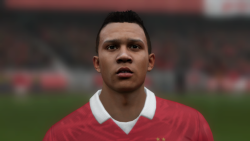
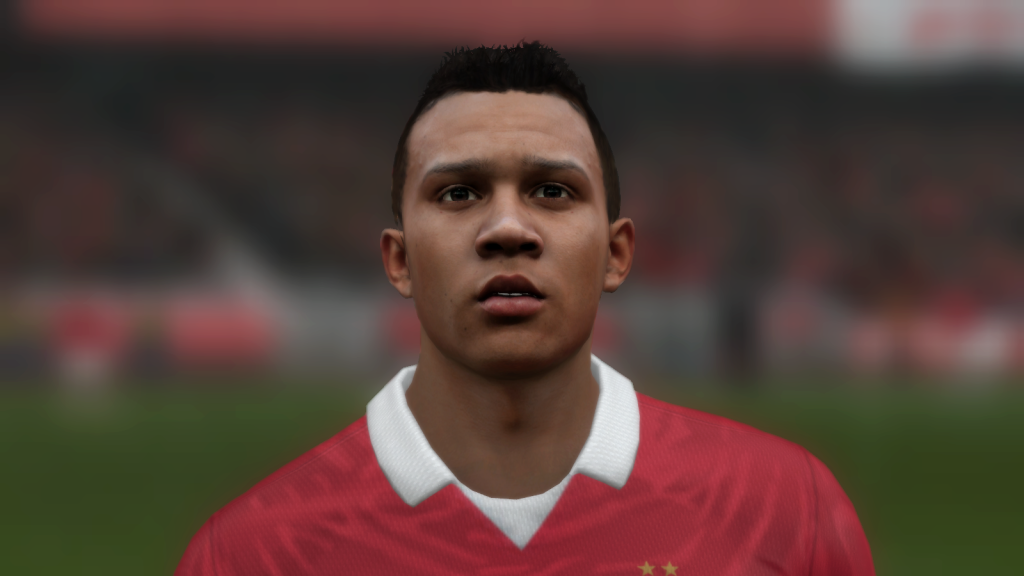
FIFA gets better every year. This time around EA has made some major changes in the career mode, which has received many positive responses. Tons of players who quit Career mode in FIFA 15 should look forward to playing Career mode more often and with enthusiasm in FIFA 16.
We have a list of the best young players in FIFA 16, which you can use to build a strong squad or make a huge profit in the transfer market.
Luciano Vietto – ST - 21 Years Old
Overall Rating: 79
Potential Rating: 88
Best attribute: Pace of 89
The 21 year old has been called and labelled the next Aguero. He already had a rating of 78 in FIFA 15, which has increased to 80 in the latest edition.
Breel Embolo – ST – 18 Years Old
Overall Rating: 76
Potential Rating: 87
Best attribute: 90 in Sprint
Embolo is the one player every scout in FIFA 15 career mode want you to sign. This insane talent has improved a lot this season, which has enhanced his FIFA 16 overall rating to 76 from 74.
Nabil Fekir – CAM – 21 Years Old
Overall Rating: 80
Potential Rating: 88
Best attribute: 89 in Balance
Nabil Fekir has improved a lot this season scoring about fifteen goals and assisting ten more in reality with his club, Lyon. His FIFA stats has boosted to potential of 88.
Memphis Depay – LW – 21 Years Old
Overall Rating: 80
Potential Rating: 87
Best attribute: 90 in Sprint Speed
Memphis Depay is definitey going to be one of the most used players in FIFA 16 as he has successfully moved to Manchester United. The mini-Ronaldo will have a potential to improve to up to 87 in FIFA 16.
Raheem Sterling – CAM - 20 Years Old
Overall Rating: 82
Potential Rating: 88
Best attribute: 92 Sprint Speed
Manchester City’s big-money signing. His move will definitely affect FIFA 16 Ultimate Team as there are very few Man City-supporting gamers playing FIFA 16. As far as his potential stats are concerned, they remain the same as FIFA 15.
Youri Tielemans – CM - 18 Years Old
Overall Rating: 75
Potential Rating: 89
Best attribute: 77 in Passing and Balance
There are many top players in the centre-midfielder category, but Tielemans is definitely one to mention as he has a potential of an 89 rating in FIFA 16.
Luke Shaw – LB – 19 years old
Overall Rating: 76
Potential Rating: 86
Best attribute: 84 in Pace
There are not a lot of highly rated left backs in FIFA 16 and with Shaw having a potential of 86, he will be the most traded left back in the game.
Hector Bellerin – RB – 20 Years Old
Overall Rating: 70
Potential Rating: 86
Best attribute: 89 in Acceleration
The Arsenal speed merchant is going to be the right back with the highest potential in the game. His overall can increase from 70 to 86.
Marquinhos – CB – 21 Years Old
Overall Rating: 81
Potential Rating: 89
Best attribute: 92 in Marking
FIFA 16 has the same player what FIFA 15 had as the U21 player with the biggest potential. Marquinhos was the most traded player in FIFA 16 Career mode and he is going to make a great impact in transfer market like he did in FIFA 15.
Simone Scuffet – GK – 21 Years Old
Overall Rating: 71
Potential Rating: 86
Best attribute: 80 in Reflexes
There are not a lot of good under-21 goalkeepers in FIFA 16, but Scuffet makes it just in time to book his place in the list of the Best Under-21 players in FIFA 16.
Written by Charchit Dahal
Follow Charchit on Twitter @CharchitDahal
Like O-Posts on Facebook
You can also follow O-Posts on Twitter @OPosts
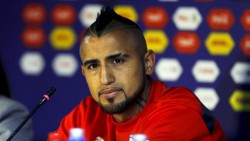
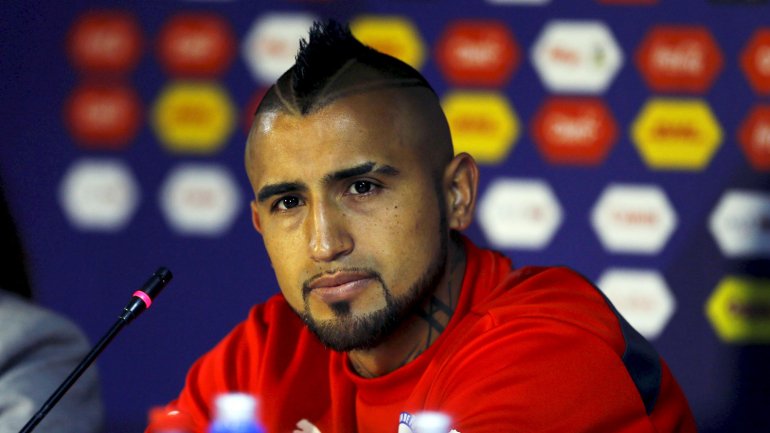
Bayern Munich’s chief executive Karl-Heinz Rummennigge wasn’t at the launch of his club’s new kit to hear the jeers from a number of supporters, but he did say he expected it. “I don’t know if they were booing Bayern Munich or just the transfer itself” he told Bild, referring to the exit of Bastian Schweinsteiger to Manchester United.
The midfielder who had won everything with Bayern over 13 years and the friendly face who drank in the local pub and played with friends in the park, Schweini as he is endearingly known to Bayern loyalists, was suddenly leaving Bavaria, where he holds a saint-like status, behind.
Rummennigge, who himself served the German giants for a decade, would have empathised with Bayern’s supporters and would have braced himself for the reaction. He would be aware Schweinsteiger would have been extremely difficult to replace, if not for his expertise on the pitch but for the admiration and worship he received off it.
Juventus’ 28 year old Arturo Vidal may have been identified as the on-field replacement however, in a move that at first glance is most unlike Pep Guardiola. Analyse it to more detail however and it takes on greater levels of curiosity.
Anathema to the graceful ball-movers that the Spaniard usually prefers, Vidal will bring with him tenacity and the raw aggression that earned him 49 bookings in his four years in Italy. Guardiola may be directing Bayern to a shift in style, but with the 44 year old entering the last year of his contract at the Allianz Arena those fond of a conspiracy theory may query if it is Bayern preparing for life without the coach.
If Guardiola is to bow out at the end of his three year deal his time will be unfulfilled if he fails, at the third attempt, to secure the Champions League that Jupp Heynckes discovered couldn’t prevent him from being shuffled aside to make way for the Catalan.
The box of league supremacy has been ticked emphatically, but humbling defeats to Spanish opposition on the continent has left a sour taste in the mouths of the hierarchy who may have even handed Guardiola a show of strength by sanctioning the sale of Schweinsteiger. The politics may be uncertain, but this coming season is undoubtedly pivotal for Guardiola.
The €30 million signing of Brazilian attacking midfielder Douglas Costa from Shakhtar Donetsk suggests he is looking for an injection of pace and he would also get that in abundance from Vidal who operated as the legs for Andrea Pirlo at Juventus.
With Schweinsteiger the one to be offloaded from glut of Bayern midfielders who all appear so similar; Phillip Lahm, Thiago Alcantara, Javi Martinez and Xabi Alonso, Vidal will offer much-needed bite and steel. Guardiola may envisage the Chilean, supported by Alcantara, doing the same dogged shielding job he did for Pirlo at Juve with Alonso.
Given his senior Chile debut by the revolutionary Marcelo Bielsa and a vital cog in the exciting teams of the 2010 and 2014 World Cups, the latter under Jorge Sampaoli which eliminated Spain and nearly did for Brazil, Vidal’s education in the persistent pressing game will appeal to Guardiola who coached it so effectively at Barcelona.
He attempted the most tackles (134) at Juventus last season and won the ball back through challenges and interceptions at a rate of 4.7 per game, stats that will be alluring to Bayern’s studious coach.
Vidal also won this year’s Copa America under Sampaoli’s tutelage, earning himself a place in the team of the tournament, a consolation prize for the failure to secure a Champions League for Juventus under Massimiliano Allegri whose focus on relentless hard-work secured a league and cup double.
It was Vidal’s fourth successive league title in Italy and a £28 million move, with Juve looking to recoup funds after renovating their squad with Paulo Dybala, Mario Mandzukic, Simone Zaza and Roberto Pereyra in a spree which has exceeded £60 million, will see him join a side who enjoy a similar level of domestic dominance. It will be on the continent that will provide the true test of his pedigree and mettle.
It will not always be pretty; Vidal is a persistent fouler and will too often walk the tightrope between the yellow and a second red card, but perhaps for once the idealist in Guardiola isn’t searching for aesthetics.
He will be asking Vidal to prowl fiercely around his midfield to allow his possession-artists to operate, and to drive an irrepressible will to win, the same kind that got Carlos Zambrano of Peru sent-off in the Copa America semi-final. With Vidal in it, Bayern won’t have the same team that bowed with a whimper to both Real Madrid and Barcelona over the course of the past two seasons.
For a reasonable fee in this current market, Vidal will provide a satisfactory replacement for Schweinsteiger and is three years the German’s junior. Though regardless of how much of a fighter he is on the field or how much he work he ploughs through in his midfield station, replacing Schweinsteiger’s Bavarian void will be way beyond him.
Written by Adam Gray
Follow Adam on Twitter @AdamGray1250
Like O-Posts on Facebook
You can also follow O-Posts on Twitter @OPosts
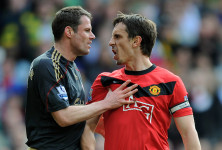
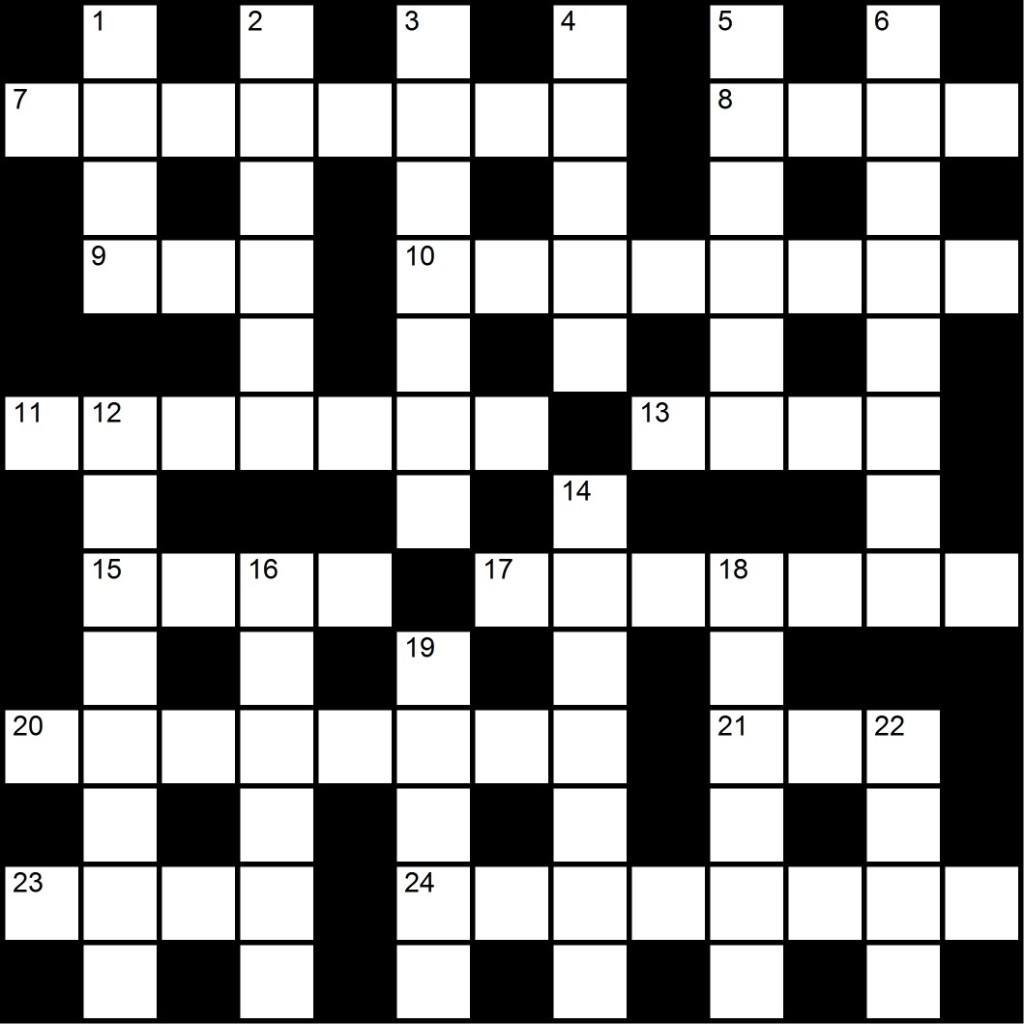
This week’s football puzzle sees bitter rivals Liverpool and Man United go head-to-head in our popular crossword face-off. So if you think you know your Phil Neals and your Phil Nevilles, come with us on another puzzle adventure!
Clues Across
7 United midfielder who went on to play for Inter then Liverpool (4,4)
8 Dejan Lovren and Milan Baros both had stints at this French club (4)
9 _ Macari, Man United star from the 1970s and 1980s (3)
10 Where Liverpool somehow came back from 3-0 down to win the Champions League in 2005 (8)
11 The Jimmy who defended for Northern Ireland and United (7)
13 Nickname of the club who sold Oyvind Leonhardsen and John Scales to Liverpool (4)
15 _ Litmanen, an underused talent during his brief spell at Anfield (4)
17 Mr Schweinsteiger, a new stellar signing for United (7)
20 ‘Old’ stadium dubbed the Theatre of Dreams (8)
21 & 4 down Shankly era colossus in defence - first Liverpool captain to lift the FA Cup (3,5)
23 Portuguese forward who signed for United in 2010 (4)
24 Domain of John Barnes and Ryan Giggs (4,4)
Clues Down
1 _ Meireles, tattooed midfielder who the Reds signed from Porto in 2010 (4)
2 A talented number seven (with a famous father) who Souness signed from Forest (6)
3 Stadium we connect with an 1980s Rap (7)
4 See 21 across
5 Spanish pass-master brought to Anfield by Rafa (6)
6 _ Moenchengladbach, the Reds beat them 3-1 in 1977 to win their first European Cup (8)
12 They blighted Daniel Sturridge’s game time last season (8)
14 Scene of United’s 2004 FA Cup Final triumph v Millwall and Liverpool’s 2006 FA Cup Final victory v West Ham (7)
16 Fabio Da Silva’s twin brother (6)
18 Long-ball specialities of Peter Schmeichel - launchpad for many a United attack (6)
19 FIFA _Player of the Year, award won by United’s Cristiano Ronaldo for 2008 (5)
22 Portugal winger who made a big money move to Old Trafford in 2007 (4)
Created by Aleric Linden
Check out more of his work at Puzzle-House through his website
Like O-Posts on Facebook
You can also follow O-Posts on Twitter @OPosts
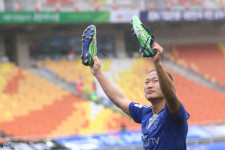
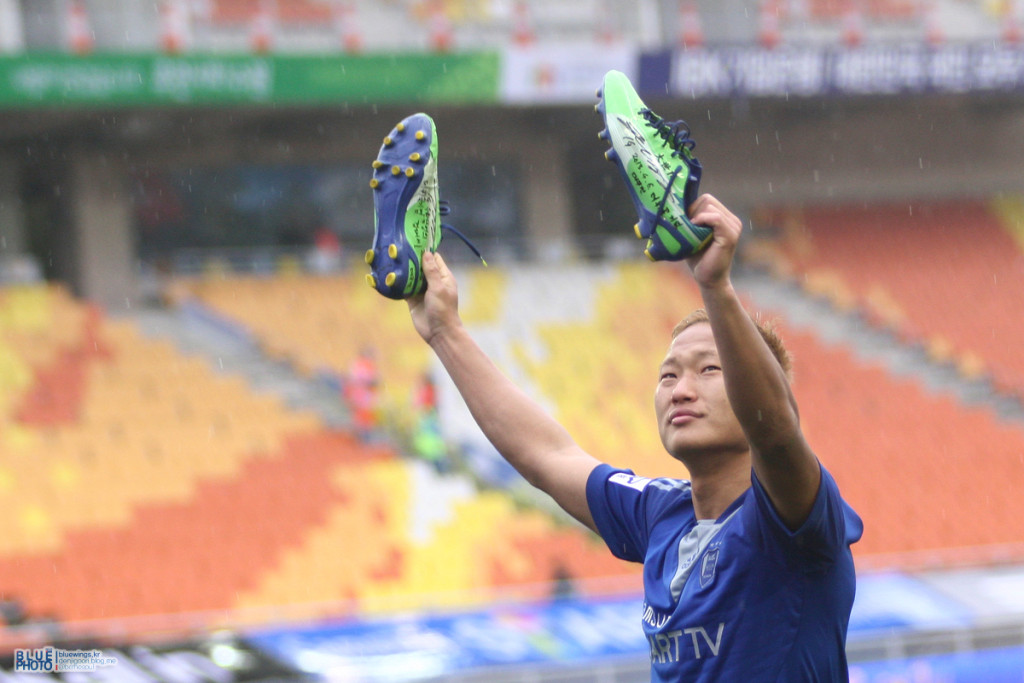
North Korean striker Jong Tae-Se has returned to Japan, transferring from Suwon Bluewings to J-League side Shimizu S-Pulse. Jong Tae-Se is well known around the world due to his performances in the 2010 World Cup where he was dubbed ‘The People’s Rooney”.
He personally likens his style of play to ex-Chelsea striker Didier Drogba and, despite scoring six goals in the first half of this season, is a striker who can hold-up the ball and bring others into play, rather than an out-and-out goal-scorer.
While there was a lot of interest in the North Korean team in the build up to the 2010 World Cup, Jong Tae-Se’s story was perhaps the most surprising. Born in Japan to Korean parents, Jong was educated in a school run for North Koreans living in Japan.
He holds a South Korean passport, so had to get special permission from Fifa to play for North Korea. At that time he was playing for Kawasaki Frontale in the J-League, but he soon got a chance to prove himself in Europe, moving to Bochum in the 2. Bundesliga, he scored fifteen goals in forty-two games for Bochum before moving to FC. Koln.
His next transfer was possibly the most surprising. After a disappointing spell at FC Koln he moved to South Korean club Suwon Bluewings at the start of the 2013 season. Jong faced several difficulties in South Korea, from away fans calling him ‘bbalgaengi’ (a red), to right-wing groups trying to get him arrested for supporting North Korea, an offense that can lead to jail-time in the South.
Nevertheless he was a consistently good performer for Suwon, and has been having a good season so far. There may be several reasons for his return to Japan, but Jong has said that Suwon haven’t offered him a new contract, and as allegedly he is one of their higher-earners, Suwon may be looking to offload him due to their current attempts to reduce their wage bill.
Shimizu S-Pulse, currently languishing at the bottom of the J-League, will be hoping that Jong Tae-Se can save their season in his second spell in Japan.
Written by Steven Price
Check out more of his work on everything South Korean football at the excellent K-League Footy
Follow his website on Twitter @Kleaguefootball
Like O-Posts on Facebook
You can also follow O-Posts on Twitter @OPosts
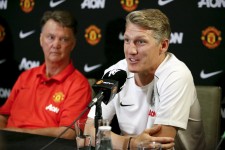
Following Bastian Schweinsteiger’s £14.4 million move to Manchester United, we take a look at three reasons why the German international is Louis Van Gaal’s most important signing since he took over the English club.
1. Training
One of Louis Van Gaal’s defining traits as a manager is the emphasis he places on training: the Dutchman is meticulous and intense with his conditioning and preparation.
As he grew older, Sir Alex Ferguson gradually favoured a less hands-on approach on the training pitch and this might explain the culture shock that some United players experienced last season under Van Gaal, who himself admitted his more demanding methods were taking their toll.
Injuries and loss of form to key men stole momentum from United’s campaign and the signing of Schweinsteiger is a direct reaction to this. Under Van Gaal at Bayern Munich, the Germany international was famously converted from a wide midfielder his now-favoured holding role.
“Schweinsteiger never played there, so after two weeks of training sessions and two matches, he felt he could do more than ever,” Van Gaal told FIFA.com in 2013.
In other words, Schweinsteiger trusts Van Gaal’s methods and knows what will be expected in pre-season and in between big matches. His faith in the philosophy should inspire other players, young and old, and he will no doubt be one of Van Gaal’s lieutenants in this regard.
After all, Schweinsteiger’s career enjoyed a meteoric rise after being converted by Van Gaal, as Bayern immediately won a league and cup double and narrowly missed out on the UEFA Champions League that season.
2. Control
Ultimately, Schweinsteiger’s time at Manchester United will be judged on his performances on the pitch: this is a club where expectations of players are especially high, given the calibre of recent greats (David Beckham, Paul Scholes, Eric Cantona, to name a few).
Schweinsteiger differs from many of his midfield predecessors in his style of play, offering control and rhythm rather than innovation or audacity. He appears to be a replacement for his ageing, English equivalent, Michael Carrick.
This fascinating comparison between the former Bayern Munich lynchpin and Spanish great Xavi provides great insight into the qualities he will bring to United. It is also no coincidence that Van Gaal has previously mentioned both Xavi (whom he handed his Barcelona debut when in charge of the Catalan club) and Schweinsteiger in the same breath, as players he has fostered and developed.
Indeed, United experienced considerable trouble controlling games in midfield and dictating tempo last season, with a number of personnel and combinations attempted in midfield.
Schweinsteiger might not be quite the metronome that Xavi is, but he is one of the Spaniard’s closest contemporaries.
It is ironic then, that Schweinsteiger never flourished under Pep Guardiola at Bayern Munich, who implemented a philosophy in which Xavi had previously thrived. The truth – as shown in the above link – is that Schweinsteiger favours a slightly more direct flavour to his midfield play.
Van Gaal is a manager who is slightly more pragmatic than Guardiola and will foster a style of play that is slightly less focused on ball retention.
This will suit Schweinsteiger perfectly, allowing him the freedom to shoot and get forward without compromising his main job: helping United to keep the ball more effectively.
3. Leadership
“Basti is an absolute leader and world-class player who can put his stamp on any team, including of course Manchester United,” Germany coach Joachim Low said on www.dfb.de recently.
“He knows Louis van Gaal, who wanted him unconditionally.
“He will approach his new challenge in England like we all know him - with edication and highly-motivated.”
A glowing endorsement from his national team coach and pretty much everyone who has cared to comment on the transfer says it all about Schweinsteiger: he is universally respected for both his achievements on the pitch and the manner in which he conducts himself off it.
Until this point he has been a one-club man and all of the quotes attributed to the 30-year old thus far reflect his professionalism.
Leadership is an area where Manchester United have struggled since Ferguson’s retirement, with Wayne Rooney shouldering much of that burden.
Schweinsteiger’s immense experience – at both international and domestic level – will not only relieve that burden but also bring an added air of confidence and direction to every aspect of the club’s running.
Written by Chris Paraskevas
Follow Chris on Twitter @Cparaskevas
Like O-Posts on Facebook
You can also follow O-Posts on Twitter @OPosts
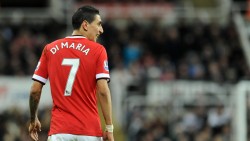
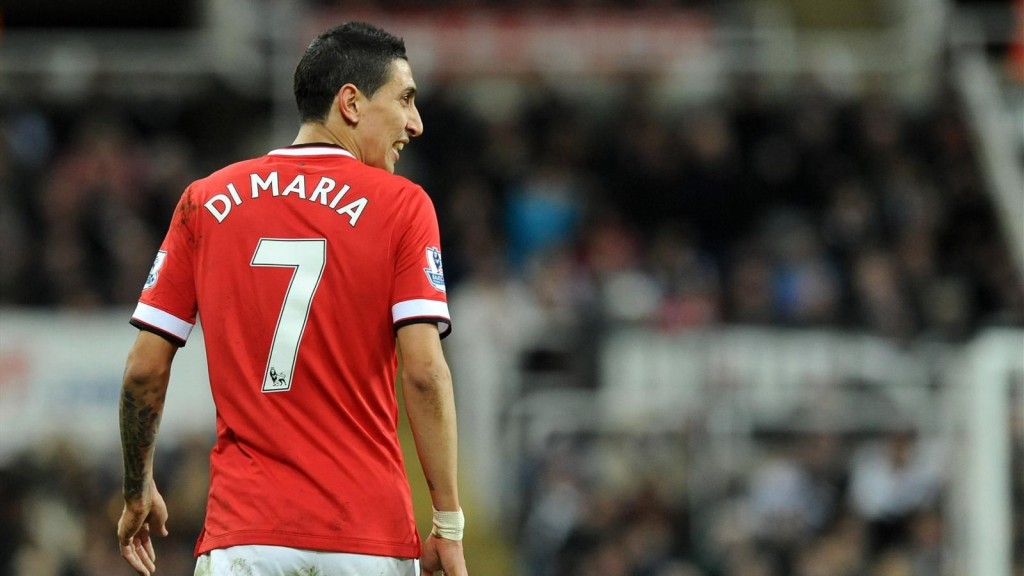
In the midst of the excitement borne out of the frenzy of free spending that has landed Manchester United Bastian Schweinsteiger and Morgan Schneiderlin, there is some warning to be found in the tale of Angel Di Maria that big reputations partnered with big fees will not always be the formula for success. A year since United shelled out a British record sum of £59.7 million for Di Maria, it seems that fresh interest from Paris St Germain may end his short-lived time in England.
Louis Van Gaal may be reluctant to admit his time with the winger, who was the headline of his first transfer window in charge, is up after just one season but the Dutchman, who has given indications to his ruthless streak by flogging his countryman Robin Van Persie to Fenerbahce, will appreciate that it is business.
Van Gaal’s total summer outlay has neared £70 million with the signings of Memphis Depay and Matteo Darmian as well as Schweinsteiger and Schneiderlin, and with the potential of more to come, a reported £43 million sale will be an important recoup of funds. United’s eye-watering revenue streams means Financial Fair Play regulations are never a concern at Old Trafford but a chance to balance the books will be welcomed as they look to fund moves for PSG’s Edinson Cavani, possibly as a direct swap for Di Maria, and Valencia’s Nicolas Otamendi.
PSG meanwhile have benefitted from the relaxation in the FFP ruling that prevented them from beating United to Di Maria’s signature last year. UEFA sanctions handed to the French champions for breaking the governing bodies’ rules on finances have been identified by Nasser Al Khelaifi, PSG’s Qatari owner, as the main reason behind their failure to lure Di Maria directly from Madrid.
The announcement from UEFA president Michel Platini in May about the easing of those restrictions has permitted PSG to enter the market with the same aggression that previously snared David Luiz, Thiago Silva, Zlatan Ibrahimovic, Lucas Moura, Marquinhos and Cavani as their ambitious owners, the Qatari Investment Authority, sought to establish their club as a European powerhouse. Their refreshed spending powers has reportedly allowed them to offer Di Maria a package of the same £200,000-a-week wages he is currently on at United.
Their work in this summer’s market has so far been slow, spending £7 million on Serge Aurier from Toulouse and £6.6 million on Eintracht Frankfurt’s Kevin Trapp, deals offset by the £9 million sale of Yohann Cabaye to Crystal Palace. But a move for Di Maria will be a statement of intent in-keeping with their desire to make it deeper into the Champions League than the quarter-final stage that has so far been an impasse for the club under Carlo Ancelotti and Laurent Blanc.
Di Maria of course won that competition with Real Madrid only 14 months ago and was a vital part of his country’s run to the World Cup final just a month later before injury robbed him of the chance to compete against Germany in the Maracanã showpiece. He moved to United as La Liga’s leading assist maker and as the player Cristiano Ronaldo personally lobbied Florentino Perez not to sell.
Man of the match in the 4-1 triumph over rivals Atletico as Real brought home La Decima and a big part of the 2012 La Liga championship under Jose Mourinho having fought back from a difficult start to the season, Di Maria’s stock was extremely high. His genius apparent, Van Gaal could justify all of the money it took to buy him.
Back then, that is. Di Maria ended his season of struggle at United with just one start in the last eight games after getting sent off for pulling the referee’s shirt in an FA Cup tie with Arsenal. Before then hamstring injuries had blocked a promising start in which he was named player of the month for September and illustrated his vast talent with an audacious chipped goal against Leicester. Off the field, there was also the misfortunate case of his house being attacked by men with scaffolding poles.
Di Maria witnessed the incident with his wife and daughter who probably would have met with relief Van Gaal’s announcement in May that he would be interested in selling the winger if he asked to leave. United’s raft of new arrivals is likely to mean there will be a shift to a 4-3-3 and no room for Di Maria in the midfield role he prefers, leaving the position on the right-flank of an attacking trio where he will face competition from Juan Mata.
Though with 11 assists last term he was United’s creative player and he remains for Van Gaal a vital asset who can dictate the pace of a game with his intelligence and guile, as he did in the away victory over Liverpool in which he produced a delicate lofted pass for Mata to dispatch the game’s winning goal. He is still the player that can produce pivotal performances of the kind that guided Argentina past Paraguay in the semi-finals of the Copa America with a 6-1 win.
Though he limped off with injury in the final defeat to Chile, his two goals and an assist in the demolition of Paraguay posed a dilemma for Van Gaal as much as it would have attracted PSG.
With the Dutchman toying with the temptation to try and find a way of fitting Di Maria into his side and PSG looking for a replacement for Ezequiel Lavezzi who is set on a return to Italy, there are many questions to answer but with a hugely talented player determined to get his club career back on track at the centre of them all.
Written by Adam Gray
Follow Adam on Twitter @AdamGray1250
Like O-Posts on Facebook
You can also follow O-Posts on Twitter @OPosts
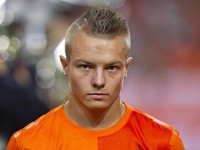
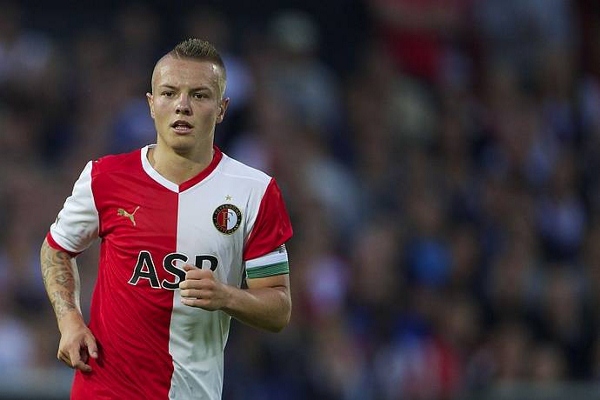
As you may have read in my last few articles, the majority which have been to discuss whether the next Eredivisie starlet was ready for the Premier League and today is another.
But this is different, this one has legs as Southampton have already contacted Feyenoord for their star’s services, which is why I am seeking to discuss if this young kid from Holland is ready to replace the departed Morgan Schneiderlin.
First, let’s have a look at who Jordy Clasie is and his rise to stardom in Rotterdam.
Club career
Clasie grew up in Haarlem, a small town not so far away from Amsterdam.
He was given his first football boots by Willem Van Hanegem, a former Dutch international himself who was a friend of his father.
At 9 years of age, he was discovered by Feyenoord and accepted the offer to join their youth system.
It was not smooth sailing for the young Jordy at the start as constant travelling via trains was taking its toll, plus he was getting criticized on a regular basis by then head of youth development: Henk Van Stee, who would regularly call him too small and urge him to leave the club.
But then he left for Shakhtar Donetsk and his successor, Stanley Brard, did have confidence in Clasie, who knows what would have happened if he didn’t.
Clasie was loaned out to Excelsior in 2010 making his debut vs Feyenoord of all clubs a week later and had his first competitive goal ever scoring away at NEC in Nijmegen. After a successful loan period, he returned to Feyenoord and started most of the preseason before making his official debut against, coincidentally, Excelsior.
He quickly grew to be a fan favorite and scored his first goal for Feyenoord against Groningen. Clasie finished the season only missing one game and ended up winning the Young Player of the Season award, which was given to him by his old friend Willem Van Hanegem.
And guess who was the manager who gave him his breakthrough? Ronald Koeman, the current Southampton manager.
Things moved quickly for Clasie the next season, where he was given the number 6 and was made reserve captain behind Stefan De Vrij amidst rumors of interest from major clubs like AC Milan, Roma, Juventus, and Tottenham Hotspur. However, Clasie rejected these clubs to stay a few more seasons at his beloved Feyenoord.
He is currently Feyenoord’s captain, but the club’s failure to win any trophies has surely shortened Clasie’s patience with his beloved side and their ambitions.
International career
Clasie was first called up to the “Jong Oranje”, or the Dutch U-21s, in December 2010.
He also was called up for the 2013 U-21 Euro Championship in Israel, where he was used mainly as a substitute.
On the 1st of August 2012, he was picked by Louis Van Gaal for the Dutch side for the friendly vs Belgium. He wouldn’t wait long to grab his first cap, which he managed to do so on the 7th of September 2012 vs Turkey at the Amsterdam Arena.
He was then picked for the World Cup two years later and was praised for his performance in the third-place play-off vs Brazil, which Holland won comfortably 3-0.
Strengths and Weaknesses
Well, Jordy Clasie is your typical 21st-century defensive midfielder. He is small in stature, just like Javier Mascherano or Nigel De jong, but because of his fine tackling ability this does not work against him.
He is a very sound passer of the ball, but likes to keep the game simple and does not look for a 50 yard pass or a through ball. He is also not attack-minded as his low goalscoring rate proves and is very assured and calm when the ball is at his feet.
Is he the ideal target for Southampton?
In my opinion? Yes.
Here are the reasons why:
Of course there are things that could go wrong as he could struggle with the pace of the Premier League as Feyenoord at a very slow tempo or he could up short physically, but I do not see this happening.
In conclusion, to all Southampton fans: this could be a signing to be excited about.
Written by Jamie De Geir
Follow Jamie on Twitter @evertonianjamie
Like O-Posts on Facebook
You can also follow O-Posts on Twitter @OPosts